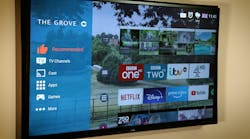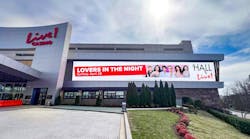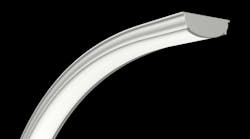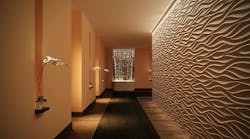Date Announced: 10 Feb 2011 Gallium Lighting, LLC announced today it has accepted an inaugural position on the Industry Advisory Board for the Center for Ubiquitous Communication by Light (UC-Light Center) based at the University of California, Riverside’s Bourns College of Engineering. Gallium Lighting was one of the first companies to introduce LED downlighting fixtures to the commercial world. They have won awards for their Energy Star rated products and produce some of the most energy efficient, environmentally friendly commercial downlights on the market today. By joining together with the research efforts of the UC-Light Center, Gallium Lighting continues their efforts to remain on the leading edge of development for commercial applications using advanced LED lighting technologies.About the UC-Light CenterEstablished to stimulate new concepts and new economic opportunities in wireless communication, the center is funded by the University of California’s Multicampus Research Program and Initiatives and engages faculty from UC Riverside, UC Berkeley, UC Davis, UC Merced, and Lawrence Berkeley National Laboratory. In collaboration with companies in multiple industries, the center will develop visible light communication (VLC) concepts that can lead to new technologies, systems and services for indoor and outdoor wireless data transmission, geolocation, and tracking using visible lights.The UC-Light Center’s mission is to develop the VLC technologies necessary for making wireless communication by light commercially successful. At the enabling technology level, they are developing concepts for signaling and networks using light-emitting diodes (LEDs), which increasingly are being used for indoor and outdoor lighting and signage. Specific applications already targeted for development include indoor wireless networking and navigation in complex environments, hospital asset management, and automobile and traffic control.“PDAs, HDTV, information kiosks, computers and laptops all can be interconnected wirelessly through visible light,” said Daniel Xu, professor of electrical engineering at the Bourns College of Engineering, principal investigator and Director of the new research center. “The visible light spectrum is several orders of magnitude larger than the crowded radio frequency (RF) spectrum, and thus has huge potential for low cost and high data rate communication.”“Imagine the enormous potential for commercial, medical, educational and public safety applications as a result of everyday LED lighting sources, both inside and outside of building structures, having the ability to intelligently communicate,” said Gordon Campbell, director of business development for Gallium Lighting, LLC and CEO of Cybertime Network Communications. “You could actually use your laptop, notebook, cell phone, or a variety of other data communications devices in sensitive venues such as hospitals without fear of Radio Frequency based interference with critical medical equipment. It would also make functions like airport ground communications much easier to manage if administrative, security and resident vendor traffic was off-loaded to an LED light source based network rather than the already congested RF signals that support existing cellular, data, and voice communications.”
Contact
Gallium Lighting www.galliumlighting.com UC-Light www.uclight.ucr.edu/
E-mail:[email protected]






